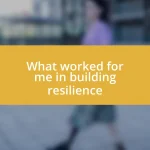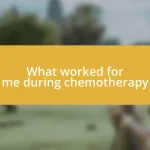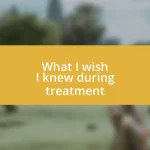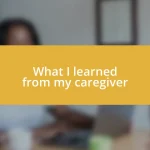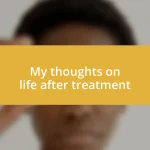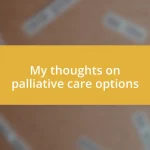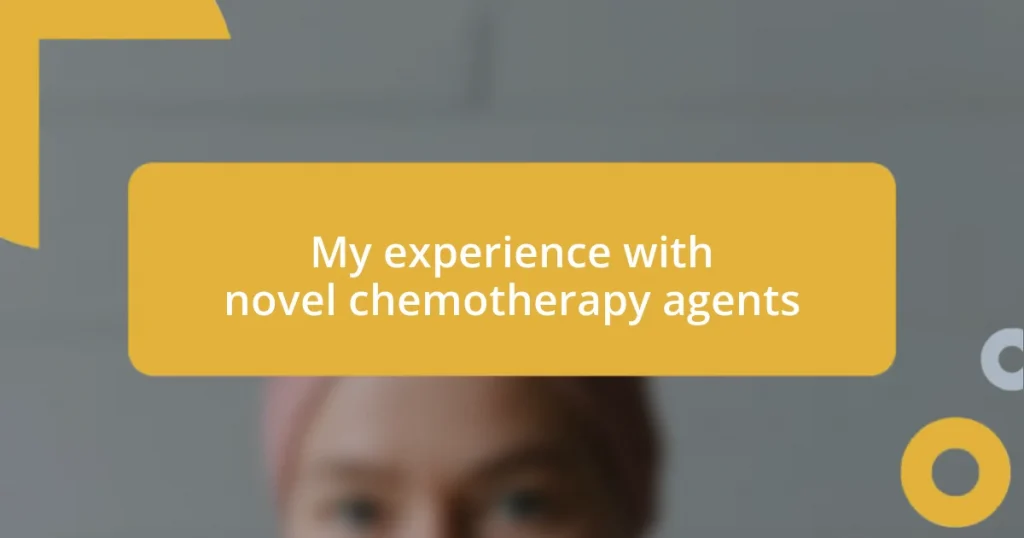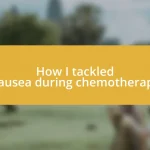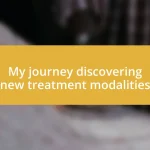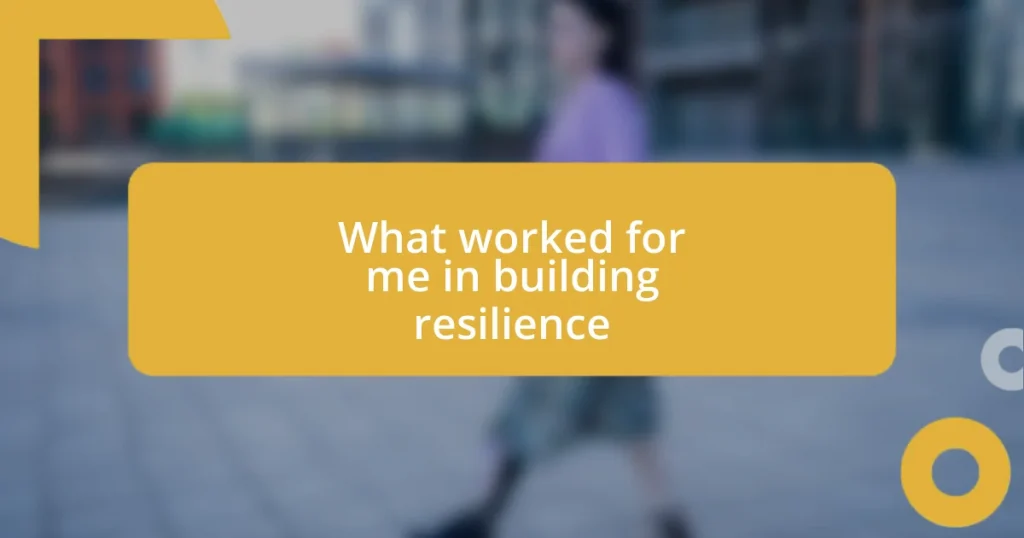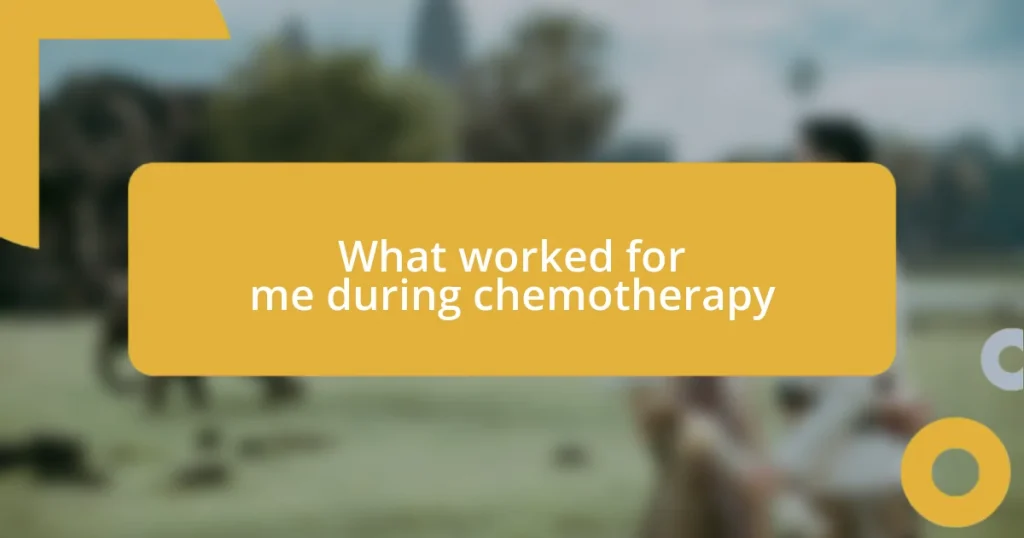Key takeaways:
- Novel chemotherapy agents, such as targeted therapies and immunotherapy, offer more precise treatment options, reducing harm to healthy cells and improving patient experiences compared to traditional chemotherapy.
- While novel treatments often have fewer side effects, patients may still face challenges, such as fatigue and skin reactions, highlighting the importance of personalized care and open communication with healthcare providers.
- Future advancements in chemotherapy may include combination therapies and the use of artificial intelligence to enhance treatment personalization and efficacy, emphasizing a shift towards better quality of life for cancer patients.

Understanding novel chemotherapy agents
When I think about novel chemotherapy agents, I can’t help but feel a sense of hope mixed with a touch of apprehension. These drugs represent cutting-edge advances in cancer treatment, often targeting specific cancer cells while sparing healthy tissue. Isn’t it incredible to consider how far we’ve come in oncology?
One experience that stands out for me was when a close friend started treatment with a targeted therapy. The difference in her side effects compared to traditional chemotherapy was striking. While she still faced challenges, the tailored approach of her treatment seemed to make the journey a bit more bearable. It got me thinking—how often do we underestimate the power of precision in medicine?
I’m always amazed by how these agents are developed through extensive research and clinical trials. They don’t just offer hope; they transform how we understand cancer dynamics. Personally, I find it reassuring to learn that these novel therapies are built upon a foundation of scientific collaboration. It’s a reminder of the progress we can achieve when we come together to tackle such complex diseases.

Types of novel chemotherapy agents
Novel chemotherapy agents come in various types, each designed with unique mechanisms to combat cancer. As I navigated the landscape of these treatments, I was genuinely fascinated by how they could disrupt the life cycle of cancer cells. The innovative approaches behind these agents highlight the strides we’ve made in tailoring therapies to individual patient needs.
-
Targeted Therapies: These agents specifically attack cancer cells by targeting molecular markers, significantly reducing damage to healthy cells. I remember discussing this with my oncologist, and feeling a sense of empowerment, knowing that treatments could be so precise.
-
Immunotherapy: Here, the body’s immune system is harnessed to recognize and destroy cancer cells. Witnessing a friend respond positively to this type of treatment left me in awe of the body’s own capabilities.
-
Antibody-Drug Conjugates (ADCs): They combine antibodies with chemotherapy drugs to deliver treatment directly to cancer cells, minimizing side effects. I once attended a seminar where researchers passionately explained this approach; their excitement was infectious!
-
Small Molecule Inhibitors: These agents block specific enzymes or proteins involved in cancer growth and proliferation. It struck me how the refinement of these molecules reflected months—if not years—of dedicated research.
Each type of novel chemotherapy agent carries the promise of personalized treatment. It’s this evolving landscape that feels so optimistic, reminding me of the resilience found not only in science but also in those fighting cancer.

Side effects of novel treatments
Experiencing the side effects of novel treatments can feel like a double-edged sword. On one hand, these therapies often come with a lighter toll than traditional chemotherapy, but on the other hand, they can still introduce unexpected challenges. I recall speaking with a patient who underwent targeted therapy; while she noted improved energy levels, she also grappled with occasional skin rashes that required careful management. It’s these nuances that remind us that even innovative treatments are not without their hurdles.
Among the various side effects, fatigue remains a common thread, often catching patients by surprise. I recall my own feelings of frustration when dealing with fatigue during a friend’s treatment process, even though we were hopeful about the positive outcomes of her novel chemotherapy. Adjusting to these changes can be tough, but I’ve learned that open communication with medical professionals is essential in finding strategies to cope. Understanding that each patient’s experience is unique can make all the difference.
| Novel Chemotherapy Agent | Common Side Effects |
|---|---|
| Targeted Therapies | Skin rashes, fatigue, liver enzyme changes |
| Immunotherapy | Flu-like symptoms, skin reactions, fatigue |
| Antibody-Drug Conjugates | Low blood cell counts, fatigue, nausea |
| Small Molecule Inhibitors | Diarrhea, liver toxicity, fatigue |
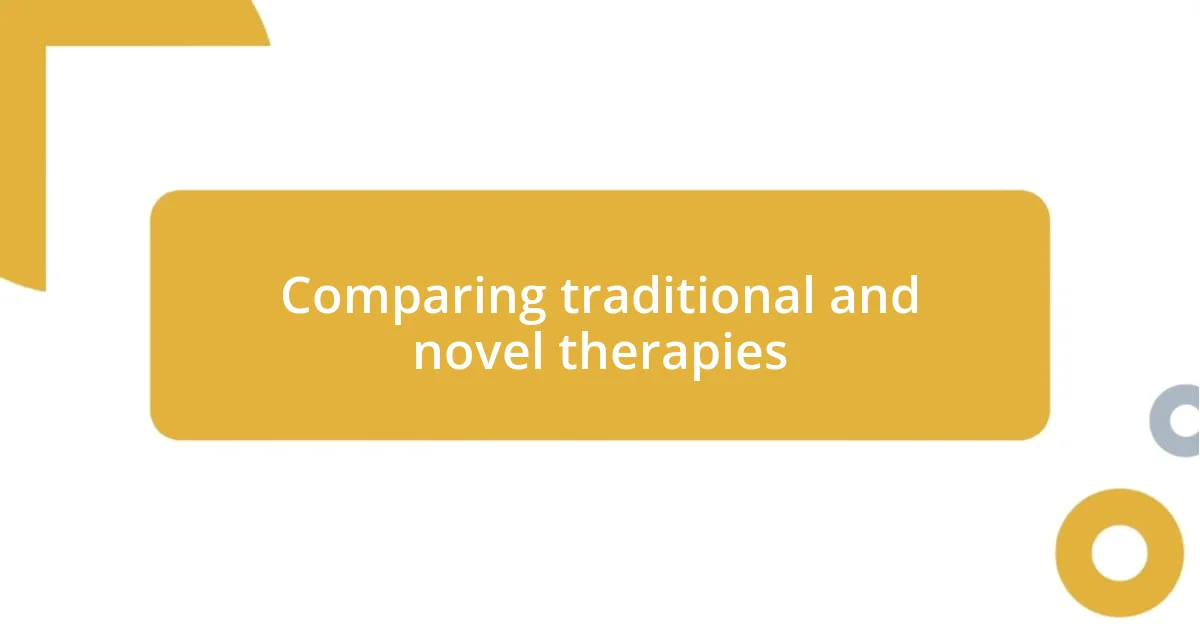
Comparing traditional and novel therapies
When I reflect on traditional chemotherapy, it’s hard not to think about the brutal side effects it often brings—nausea, hair loss, and overwhelming fatigue. I remember a family member who went through a rigorous regimen, and witnessing those struggles was heart-wrenching. It made me wonder, couldn’t we do better? Novel therapies seem to embody that promise of improvement, offering more tailored approaches that can leave the healthy cells relatively unscathed while still tackling the cancer head-on.
In my conversations with fellow patients, there’s a palpable excitement about the precision of novel treatments. I once met someone who was participating in a trial for a small molecule inhibitor. The way he described how it specifically targeted the enzymes fueling his cancer gave me hope. Could this be the future of oncology? The distinction between traditional and novel therapies feels significant; it’s about shifting from a one-size-fits-all approach to something much more personalized and effective.
It’s been fascinating to observe how patients’ journeys differ with these advancements. I spoke with a woman who was initially sceptical about immunotherapy but ultimately found her answer in it. The relief in her voice was tangible when she mentioned her tumors shrinking. It made me think: what stories might other patients tell if they were offered the same opportunities? The contrast between traditional and novel therapies isn’t just clinical; it’s deeply human, showcasing resilience, science, and the continuous quest for breakthroughs.
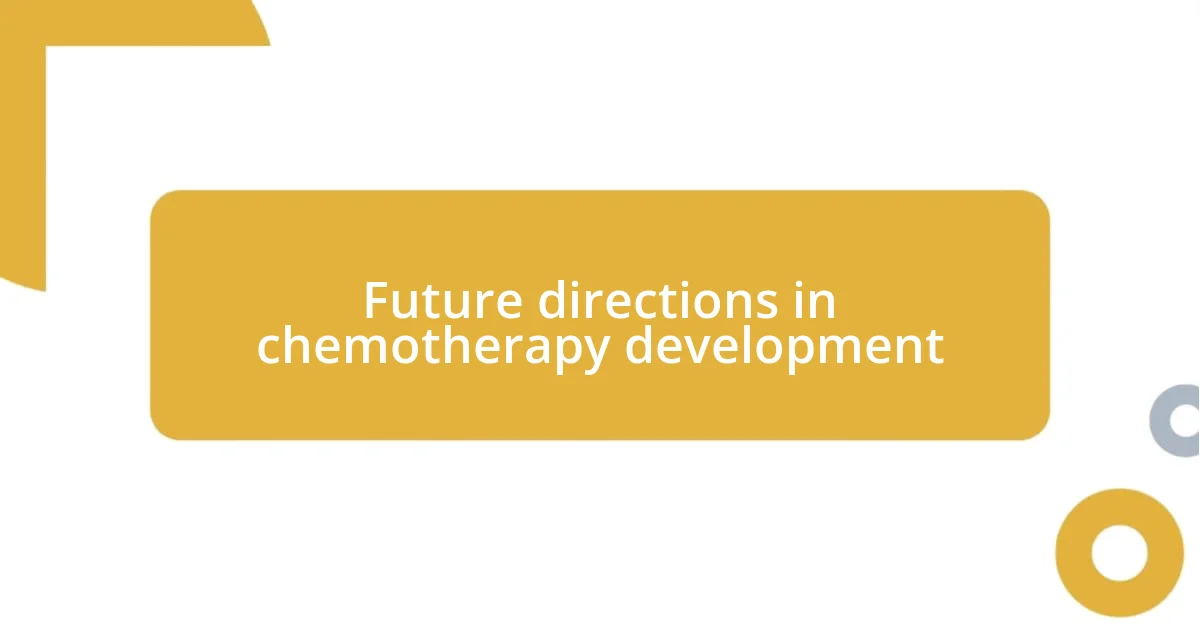
Future directions in chemotherapy development
I find myself intrigued by the potential future directions of chemotherapy development. One promising avenue is the rise of combination therapies, where we blend novel agents to maximize efficacy while minimizing side effects. I once attended a seminar where a researcher shared compelling results from combining immunotherapy with targeted therapies, and it sparked a wave of hope in me. Could this be the next big leap forward in treating complex cancers?
Another fascinating aspect is the incorporation of artificial intelligence in chemotherapy drug development. The idea that AI can analyze vast datasets to identify patterns or predict patient responses excites me. I’ve always believed that understanding the individual nuances in treatment could lead to better outcomes, and AI seems poised to revolutionize how we approach this challenge. Isn’t it remarkable to think that technology can actually enhance our ability to personalize treatment plans?
Finally, I can’t overlook the ongoing clinical trials that are exploring new compounds and mechanisms of action. I remember the anxious anticipation I felt when reading about a trial focusing on a novel agent that works differently than everything we currently have. With each breakthrough, I am reminded that the future of chemotherapy isn’t just about survival; it’s about improving quality of life. Will we eventually see therapies that make cancer treatment feel less like a battle and more like a manageable process? The excitement of these possibilities keeps me hopeful for what lies ahead.

